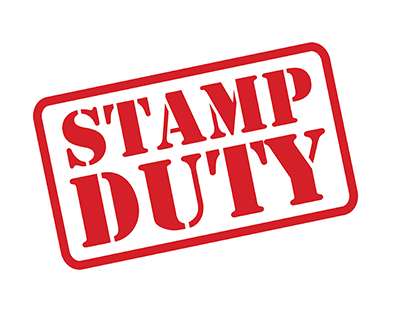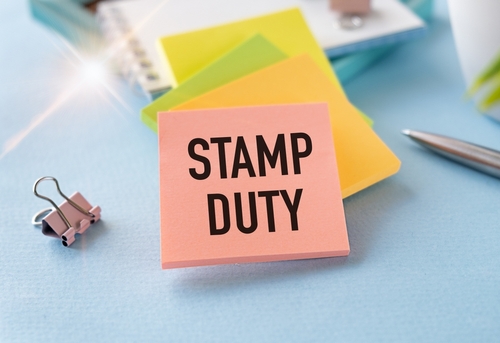Patrick Cannon, one of the UK’s leading tax barristers, explains why some property investors may be overpaying stamp duty charges.
Buying a property is, clearly, a multifaceted transaction. With solicitors to chase, surveyors to organise and mortgage lenders to manage, it is easy to overlook stamp duty – which can lead to buyers and investors being wrongly charged a higher rate of stamp duty (SDLT) than legally required.
Homebuyers sometimes overpay stamp duty because their conveyancers either don’t have the information they need to decide that a stamp duty relief applies, or they wrongly decide that a relief cannot be claimed. Conveyancers, on the whole, take a conservative view - many prefer not to make it if there is any doubt, so that they do not risk coming into conflict with HMRC.
There is a huge range of stamp duty reliefs, but the main types are:
Second homes
Stamp duty is higher for residential properties, but the rules are so complex that many conveyancers and advisers fail to understand them properly. Some think that the 3% additional rates are payable when they are not. In other instances, they fail to factor in multiple dwellings relief, which can substantially lower the overall stamp duty charge. It is always worth checking the position in case stamp duty was overpaid and a refund claim is available.
Mixed-use properties
Those who buy a mixed-use property – i.e. both residential and non-residential – are eligible to pay lower rates of stamp duty, but the definition of what is a mixed-use property is currently a matter of debate with HMRC. There are several cases currently before the tax tribunal awaiting a clearer definition. For anyone who believes their property qualifies as mixed-use, then an SDLT repayment claim should be considered.
Multiple dwellings relief
Multiple dwellings relief is worth considering for buyers who purchase a property containing more than one self-contained unit, such as one or more annexes within the house – or self-contained accommodation in outbuildings on the property.
How can buyers find out if they’re eligible to reclaim?
Buyers should check the details of a purchase and then consider whether a stamp duty relief applies. In most cases the refund claim must be made to HMRC within 12 months and 14 days of completing the purchase.
In cases of claiming back the 3% higher rates for replacing a previous main residence, the claim must be made within 12 months of the sale of the previous main residence.
If stamp duty has been overpaid because a conveyancer failed to claim the relief, it is possible to amend the SDLT return and make a claim to lower rates of SDLT.
How to claim back stamp duty
HMRC’s SDLT calculator enables property owners to work out the rates of stamp duty. Individuals can then write to HMRC to claim for the amount that has been overpaid.
There is a time limit on when claims can be made, though. Depending on the nature of the claim, it must be made within 12 months and 14 days of the purchase of the property – or in some cases, four years from the filing date for the SDLT return. The refund rules are complicated but if the deadline for making a claim is missed, buyers could claim against their conveyancer.
Many people decide that they want expert help and advice in making a refund claim, especially when the stamp duty rules are so complicated. Often, buyers prefer not to risk making a claim and then find that down the line that they were not entitled to the refund – in which case they would be required to repay the refund plus interest and penalties.
How long does a stamp duty reclaim take?
Generally, a refund claim takes several weeks to be processed and repaid by HMRC. The important point to note, however, is that HMRC operates a “process now/check later” procedure which means that they will normally pay out the refund after some basic checks. They will then examine the claim in more detail within a nine-month period after the claim.
Where the refund claim looks questionable, HMRC will open an enquiry and require detailed information in support of it. If they then disagree that a refund was due, they will issue a closure notice requiring repayment.
It is important to note that, just because HMRC pays the refund initially, it does not mean that it will not be challenged later on. Some SDLT refund claims companies will charge a fee as a percentage of the amount refunded, but claimants should always ensure that this fee is conditional on HMRC not revoking the refund.
HMRC publishes guidance on making a refund claim online, and this will save the fee charged by an advisor. However, in my experience, many people find the process of claiming back their stamp duty complex and time-consuming, especially after the inevitable stress of house-buying and prefer the reassurance of an experienced adviser dealing with HMRC on their behalf.
*As a tax barrister licensed by the Bar Standards Board to act directly for members of the public, Patrick Cannon can help with assessing eligibility for an SDLT refund – from calculating the amount owed, collating all the necessary information, filing the claim and corresponding with HMRC.









.png)










Join the conversation
Be the first to comment (please use the comment box below)
Please login to comment